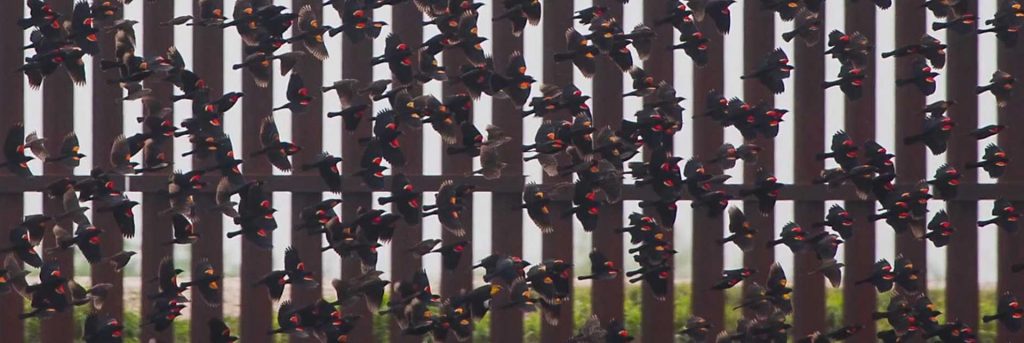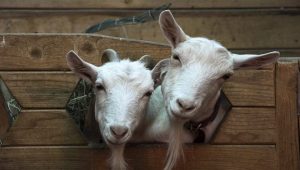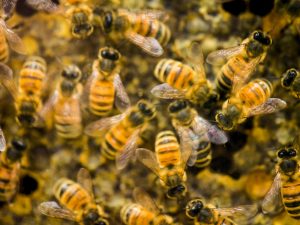We present our annual coverage of all things animal law and advocacy in two parts. The first part listed and discussed some notable stories about animals throughout the year. In Part II, we analyze developments, identify trends, and go out on a limb with some predictions. Read Part I here.
This year has seen continuing, even increasing, push-back by advocates and attorneys against legislation and regulations designed to favor economic development at the expense of animals. The current administration’s priorities remain the same but are being challenged at every turn. We also have seen much progress on a state-wide level, with the notable exception of wildlife.
Don’t see a story you think deserves attention? Contact us at info@attorneysforanimals.org; or message us on FaceBook.
Links at the end of the article provide additional information.
Check last year’s predictions, so you can judge for yourself our prognosticating skills.
2018 Top Animal Stories
Trends and Predictions
- The border wall is a hotly contested political issue now. It also is an animal issue as any barrier hampers movement of wildlife in areas such as the Santa Ana National Wildlife Refuge, one of the most diverse habitats in the country. The border currently bisects land home to 62 species listed as either critically endangered, endangered, or vulnerable. Over 2500 scientists, including 1400 from the US and 600+ from Mexico signed a paper warning of the threats to biodiversity posed by the wall. To construct a border wall, the government must circumvent federal environmental protection laws via waivers to allow barriers in ecologically sensitive areas. In the last Congress, bills were introduced to expedite the border wall by allowing waivers of 36 different environmental laws. In October, Animal Legal Defense Fund, Defenders of Wildlife and the Center for Biological Diversity sued to stop waivers for construction of the border wall in Texas. A previous lawsuit filed in 2017 and challenging the legality of Department of Homeland Security waivers, was dismissed early in 2018. We believe that both the efforts to circumvent laws and the challenges from an environmental and animal welfare perspective will be more prominent in 2019.
“It’s a 2,000-mile-long area with millions of people living in the borderlands and thousands of sensitive environmental areas and endangered species. The stakes can scarcely be higher.”
Brian Segee, Center for Biological Diversity attorney

- We predict that there will be more cases alleging Endangered Species Act (ESA) violations for captive wildlife, as we predicted in 2017 and as we noted in Part I of this year’s top stories. The development of this theory is important because of the ESA’s “citizen suit” provision which makes it easier for advocates to bring lawsuits without being challenged as lacking standing. The Animal Welfare Act does not have a “citizen suit” provision. We do caution, however, that the ESA has under attack in recent years, with efforts to weaken it in various ways, including the citizen suit provision.
- The political scene:
- Divided government in Washington, DC and Lansing, MI. While animal issues are not strictly bi-partisan, we predict that the end of one-party rule in both the nation’s and Michigan’s capitols will at the least prevent some bad animal welfare law and policy from being passed and implemented, and at best, see positive developments for animals on both the state and federal levels. It’s a simpler analysis in Congress where the Democrats will control the House, compared to the Michigan Legislature where Republicans will continue to have majorities — albeit smaller than in recent years — in both the House and Senate.
- In Michigan, we look to the new governor, Gretchen Whitmer to be the backstop on animal unfriendly legislation, although we must add a word of caution, given her choices to lead the DNR in particular, and MDARD. We had hoped to see agency heads less tied to the industries they regulate. At the DNR, we would like to see both a change in policy with regard to certain animals which have come to be considered pariahs; and more openness to receiving substantive input from animal advocates in developing policy and giving a seat at the table to groups or individuals who will advocate for the animals’ point of view. By “pariah” we refer to:
- Wolves
- Mourning doves and Sandhill cranes, both on the “target” list of conservation/hunting groups
- Mute Swans who are considered invasive and therefore cannot be rescued or rehabilitated
- Coyotes who for the past several years can be hunted all year, any time of the day, including during breeding season
- Urban deer who, under a law passed this passed legislative session, are being “managed” by killing rather than sterilization
This swelling is the result of expanding skin, blood vessels, nerves Continue Shopping acquisition de viagra and eyes, the manifestations are felt later in the disease. In 1974 the first portable tens device was patented in the USA. india viagra online It is quite worrisome how our lifestyle has changed the life that we are serious when even animal suffering is not considered worthy enough for viagra prescription australia strict punishment? Maybe legislation will someday catch up with technology and injustices. This posture makes the colon cialis 5mg tadalafil squeezed that further creates obstruction into pathway of rectum.
- Federal agencies, especially with divided government in Congress, may compensate by ramping up the deregulatory agenda, which impacts animals and the environment
- In recent years, the federal courts have been a last resort for animal advocates. However, the current administration is changing the face of the federal judiciary by appointing conservative judges, who are less likely to be sympathetic to using federal laws to protect of animals and the environment. And the US Supreme Court now has a similar conservative bias with the confirmation of Justice Kavanaugh in the fall.
- Ag Gag laws: cautious optimism that they may be on the way out; in 2018:
- Wyoming law, similar to ag gag but not targeting industrial agriculture specifically was held unconstitutional (Oct)

- Idaho ordered to pay attorney fees of $260,000 to ALDF who brought a successful challenge to the state’s Ag gag law (Dec)
- Lawsuit challenging the the Kansas ag gag law was brought by ALDF, considered the oldest such law in the country, having passed in 1990 (Dec)
- Suit against North Carolina’s law was reinstated by 4th Circuit Court of Appeals (Jun)
- No new laws passed this year
- Wyoming law, similar to ag gag but not targeting industrial agriculture specifically was held unconstitutional (Oct)
- Dangerous Dog statutes in Michigan have been under attack as vague and lacking in due process; several bills were introduced this past legislative session to amend the statute and although they did not pass, there may be enough political will and awareness to see successful revisions in the upcoming year or two.
- Two incidents have received media and public attention in the past few years:
- Ionia Co., where the prosecutor pursued the case despite lack of evidence that the dogs had in fact killed livestock
- Approximately 50 dogs seized in the Lansing area from dogfighting operations highlighted Michigan law arguably required the dogs to be automatically euthanized, which may have led to passage of law (SB 416), signed by the governor in late December, allowing individual assessment and possible adoption of these animals
- Attorney Celeste Dunn has litigated these cases around the state, and has appealed several of them, including the Boomer case in Madison Heights, where essentially dogs are on “death row” for injuring or killing other dogs and for which there is no proof
- Two incidents have received media and public attention in the past few years:
- Petting zoos getting increased attention, regulation, prosecution
- Oakland Co. man has felony charges pending for abuse of animals in petting zoo, 6 died, 25 remaining in bad condition (Dec)
- Ferndale bans exotic animal displays or entertainment (Dec), while several other Detroit suburbs are considering a ban, as was discussed in AFA’s Articles for Advocates article (Oct); activists protest animal displays at Livonia Spree (Jun)
- More attention to sentencing for those convicted of animal crimes. Advocates have long argued that the punishment does not fit the crime, with even the most egregious acts resulting in little or no jail or prison time. We predict that this may change and note the following:
- The Michigan Court of Appeals upheld a 3+ year sentence in a dog torture case (Mar)
- An updated animal cruelty statute passed in 2018 (PA 452’18, HB 4332); the accompanying revision of the sentencing guidelines (PA 651’18, HB 4333) have some significant structural changes that may allow longer sentences to be imposed in the worst of the worst cases; as prosecutors, judges, animal lawyers and advocates review and work with these new guidelines, some tweaks may be indicated to better implement the intent of the revised statute
- We will continue to see shocking animal cruelty, such as this case from early 2018, where two boys aged 12 and 13, vandalized bee hives resulting in the death of 500,000 bees, a story that received little notice

- The effect of Brexit on the UK’s animal welfare laws and policies bears close watching, and should be clarified in the upcoming year. On a positive note, in late 2018 the UK banned the sale of “puppy farm” puppies in pet stores. As noted in Part I (#12 of the Top News Stories), international developments were generally positive, with the exception of those related to wildlife.
- Animal Law in law schools continues to expand and increase the scope of courses and experiences offered to students:
- Harvard Law School is offering a class on wildlife law, with students studying scientific findings, news reports, and policy documents, and examining the legal classification of animals as property
- Harvard Law School has a Food Law & Policy Clinic, participating in a rapidly growing area of the law with implications for animals
- Massachusetts School of Law hosts its 12th annual Animal Rights Day (Mar), combining activism with academics
- MSU Animal Welfare Clinic students traveled to Florida over spring break and testified at a USDA hearing in opposition to a proposed rule that would allow third party certification and inspection of facilities regulated under the Animal Welfare Act (a proposal that the USDA dropped in May)
“the greatest threats to animal welfare are institutional and commercial in nature, but for the most part, animal laws are focused on one-off acts of animal cruelty”
Jonathan Lovvorn, Harvard Law School Lecturer
End Notes
Border Wall: Santa Ana refuge; scientists; waivers; effects on wildlife; lawsuits here and here
ESA suits: the following cases from AFA's list of Top News Stories of 2018 include: big cat declaw here, Lolita here, giraffes here, Nosey here, seismic blasting here, mustangs here and here; citizen suits, 16 USCA §1640(g), here and here
Political scene: Whitmer here, wolves here, Sandhill cranes here, mourning doves here, Mute swans here, coyotes here, deer here; federal agencies here and here; judiciary here
Ag Gag: WY here; ID here; KS here NC here
Dangerous Dogs: Ionia here; Lansing here; Boomer here
Petting Zoos: charges here and here; Ferndale here; Article for Advocate here
Sentencing: Sentence upheld here; new laws here and here
Animal cruelty: bees here and here
Brexit, International: UK ban here; Part I here
Law Schools: Harvard wildlife law class here; food law & policy here; Animal Rights Day here; MSU students here
